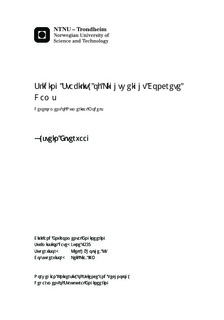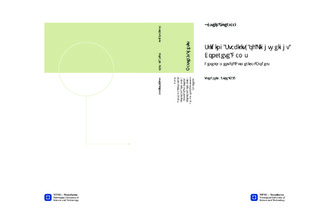| dc.description.abstract | Sliding failure of lightweight concrete dams occur if the horizontal forces subjected to the dam exceeds the shear capacity of one or more sliding planes in the dam?s structure or foundation. Thus, sliding is a result of a shear failure in the dam or foundation.
The scope of this Thesis is to investigate how surface roughness influences the shear capacity of possible sliding planes in lightweight concrete dams, and in this way affect the stability of dams regarding sliding failure. By studying physical shear tests conducted by Simen Liahagen in 2012 it has been found that the shear capacity of a sliding plane is governed by two failure mechanisms.
For a bonded interface, sliding is a result of a material failure in one or both of the adjoining materials. For an un-bonded interface, the capacity might be governed by both the frictional capacity of the roughness at the interface and local material failure in parts of this roughness. From the analyses of Liahagen?s shear tests it was found that which of these two failure modes to govern the capacity is dependent on both the normal stress and the inclination of the interface roughness.
The shear tests indicate that if the surface roughness is not cut-off, it contributes to the shear capacity in two ways. Firstly, the macro-roughness, or asperities, along the sliding plane increase the shear capacity by tilting the plane of the actual sliding failure. Secondly, for a sliding failure the micro roughness along the asperities is cut off. This contributes to the total shear capacity even more than tilting the sliding plane.
By comparing the theoretical formulations for shear capacity used in today?s guidelines to the shear tests it has been found that this theory do not represent the shear capacity sufficiently. Trough finite element analyses a better representation of the tests has been achieved, especially regarding the influence of micro roughness.
The approach from analyzing the tests has been further developed to enable assessment of the sliding stability of a full scale dam. The results show that the roughness gives a notable increase in the stability for sliding. However, further tests and calibration are needed to utilize the full potential of this method. | |

